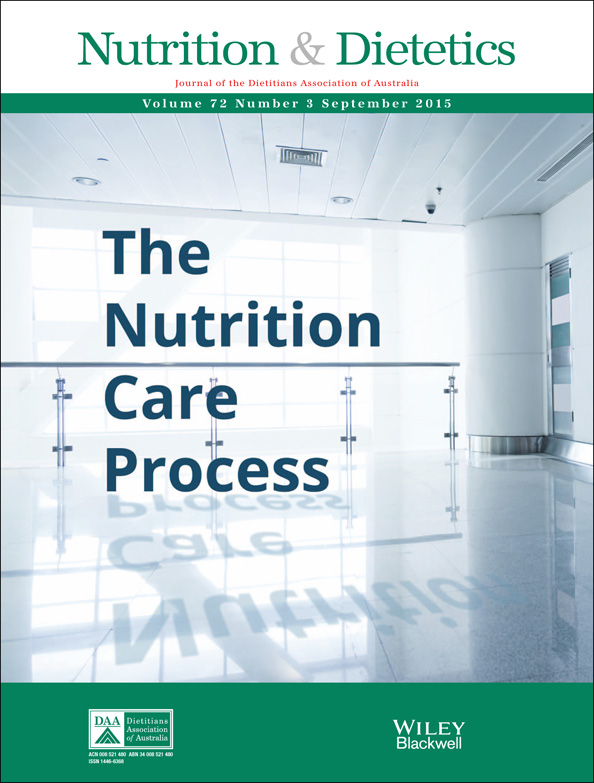Uptake of nutrition informatics in Australia compared with the USA
Abstract
Aim
To determine the method and extent of health information technology (HIT) utilisation, roles in relation to HIT in the workplace and perceived barriers and benefits of HIT by dietitians in Australia and provide a comparison with dietitians in the USA.
Methods
A survey adapted from the 2011 Academy of Nutrition and Dietetics (Academy) was utilised and circulated electronically to Dietitians Association of Australia members and advertised through a professional nutrition website in 2013. The survey encompassed 25 questions on computer access and use, data sources, experience using HIT, organisational involvement and perceived barriers and benefits to HIT. Descriptive statistics, independent t-tests, chi-square tests and z-tests were computed to investigate and compare responses from the 2013 Australian and 2011 Academy surveys.
Results
The survey completion rate represented 14.5% of Dietitians Association of Australia members (747) and 5% of Academy members (3342). The Australian and Academy respondents reported similar high levels of comfort using technology, awareness of workplace HIT benefits (such as enhanced time management and improved ability to access data) and low levels of organisational involvement. However, there were a significantly greater number of Academy organisations utilising electronic health records (P < 0.05), and significantly more Academy respondents (55%) reported ‘no barriers’ to using HIT compared with Australians (37%) (P < 0.05).
Conclusions
Educational programmes will be central to ensuring dietitians are equipped with technology and information management skills required to be involved in and make informed decisions about dietetic-related HIT projects as these will soon be fundamental to dietetic practice.




